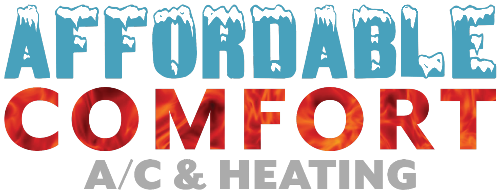What is Design Temperature?
Many homeowners wonder why their HVAC cannot provide adequate cooling or why it does not reach the set temperature even after running continuously. Various factors govern how fast the unit will be able to cool down or heat the home. Some factors include the house's size, the house's temperature when the HVAC is turned on, and whether the home has sufficient insulation to trap the air inside. An HVAC expert, after an inspection, can provide answers.
When an HVAC system is designed, it is manufactured to perform based on the ordinary conditions of the locality where the system will be installed. This is known as 'design temperature.' Thus, one of the big reasons the HVAC cannot reach the desired temperature can be extreme weather in the locale in which it was designed to perform. It may cause the HVAC to struggle on days that are hotter or colder than usual.
How design temperature works
An HVAC system is designed to work at its optimum capacity when working within the 'design temperature' range. Design temperature is based on the maximum temperature that the equipment will be subjected to and includes the range of high and low temperatures that the geographical area maintains for 99% of the year, taking the 30-year average into account.
Example of how design temperature works
If the area you reside in has a maximum design temperature of 75 degrees and the temperature outside on certain days is 90, the AC may struggle to keep up with the required cooling. 1% design temperature would mean the location will cross this temperature only 1% of the hours in the year, calculated based on the 30-year average. In such cases, there is no fault with the unit; and a homeowner will have to look for alternative ways to help control their indoor climate.
Installation considerations
A homeowner should consider the area's design temperature before sizing an HVAC system to ensure maximum comfort. It will help the unit offer the desired heating and cooling, irrespective of how hot or cold it is outside. Many contractors get comfort complaints from their customers. The temperatures may have gone extreme for a few hours in a couple of years, but considering design temperature is advisable as it is based on the 30-years average and is more reliable.
Other factors affecting temperature control
Suppose the design temperature is not the reason behind the heating and cooling performance. Other causes may include low refrigerant levels, a clogged or dirty air filter, the unit is not of appropriate size, or there is a leak in the ductwork.
Contact an HVAC professional if issues with the system make it take longer to heat or cool the home. They will inspect and determine the exact reason behind it and advise on resolving the issue.
Trust locally-owned and operated Affordable Comfort A/C and Heating for HVAC preventative maintenance and thermostat services. Call 602-574-1205 to schedule a consultation.

